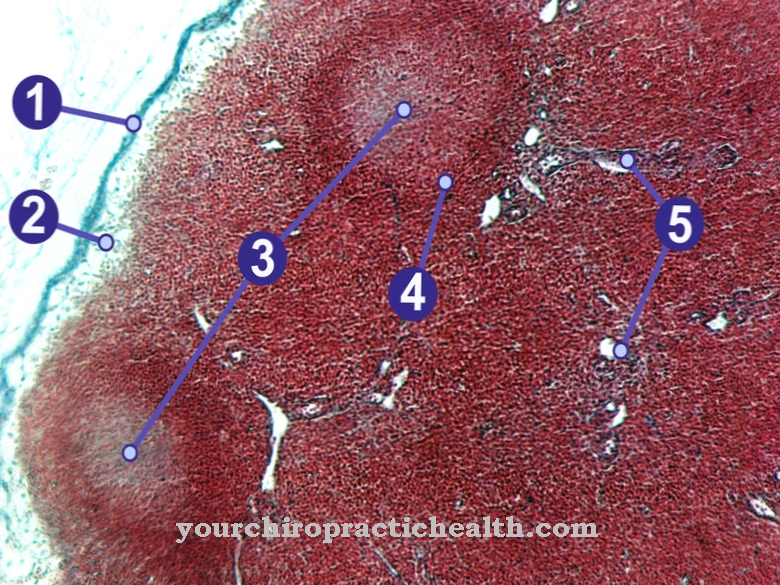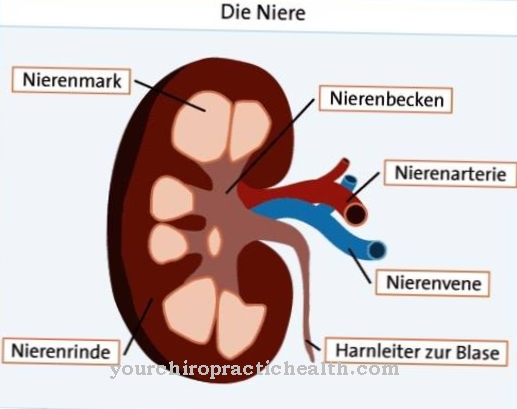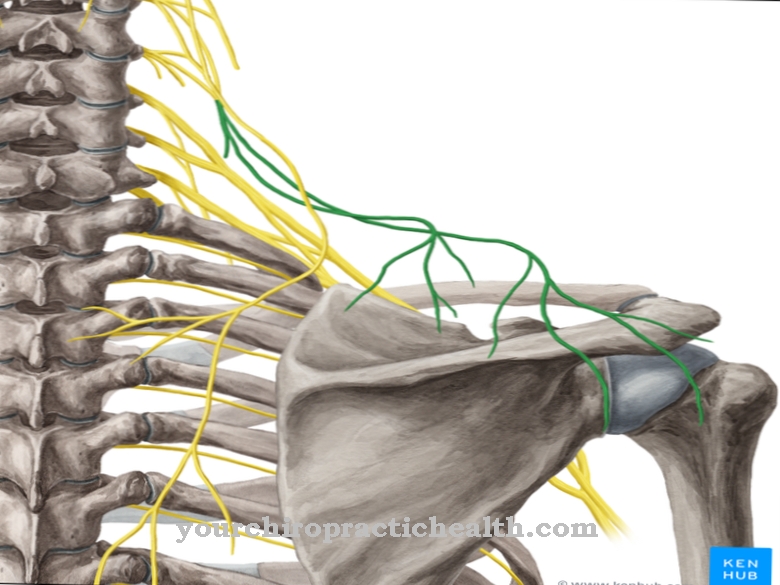The Superior ganglion is a collection of nerve cell bodies in the cranial cavity and represents a switching point for fibers from the 9th and 10th cranial nerves. It lies above the inferius ganglion and processes temperature, contact and pain signals from innervated regions. Ganglion blockers can inhibit the functioning of the ganglion.
What is the superior ganglion?
The superior ganglion is a dense accumulation of nerve cell bodies (somata) in the skull capsule or in the zygomatic vein opening (jugular foramen). The 9th, 10th and 11th cranial nerves and three important blood vessels run through this bottleneck: the inferior petrosal sinus, the posterior meningeal artery and the internal jugular vein.
Despite its close proximity to the brain, the superior ganglion is not part of the central nervous system, but of the peripheral one. According to its discoverer, Johann Ehrenritter, the ganglion superius is also less common than Knight of Honor ganglion designated; this term can be found mainly in English-language specialist literature. Strictly speaking, the superior ganglion is not a single ganglion, but rather two functionally distinguishable nerve nodes; They are assigned to different cranial nerves and are named after them ganglion superius nervi glossopharyngeus ("upper ganglion of the nervus glossopharyngeus") and ganglion superius nervi vagi ("upper ganglion of the nervus vagus").
Anatomy & structure
The superior ganglion is an accumulation of nerve cell bodies (somata) that are not surrounded by a solid core. Nevertheless, the ganglion forms a simple processing center for nerve signals that reach the upper ganglion in the form of electrical impulses (action potentials) via one of the cranial nerves.
The ganglion superius nervi glossopharyngei is assigned to the 9th cranial nerve. From here nerve fibers lead to the ganglion inferius nervi glossopharyngei, also called ganglion petrosum. The inferius ganglion is generally larger than the superior ganglion and switches neurons again. The glossopharyngeal nerve then leads inside the head to the lower face area, where it innervates the nasopharynx and the posterior third of the tongue. The actual cell bodies are located in the superior ganglion, while the connection to the supplied area is made by the axons of the cells.
The superius nervi vagi ganglion is the upper nerve node of the 10th cranial nerve and is also known as the jugular ganglion. The vagus nerve also runs through a second - usually larger - ganglion inferius nervi vagi; other branches of the neural pathway go beyond the head and lead into lower-lying areas of the body. The nerve cell bodies responsible for this, however, are not located in the superior ganglion.
Function & tasks
The task of the superior ganglion is to switch nerves. The ganglion superius nervi glossopharyngei receives viscerosensitive signals from the nasopharynx and the back of the tongue. Its cells are sensitive to temperature, pain and touch. This type of information is used, among other things, to coordinate swallowing and a series of protective stimuli.
The temperature perception in the nose, mouth and throat protects people from ingesting food that is too hot or too cold. Sensitive mucous membranes are very susceptible to damage from temperature and other influences. The perception of pain can arise through the activation of special pain receptors or nociceptors. Most of them are free nerve endings that lie in the tissue.
The cells of the superius nervi vagi ganglion also receive information about temperature, pain and contact. They innervate the larynx, the ear canal and the outermost meninges (dura mater). Sensitive nerve signals travel from the dura mater not only via the vagi nerve, but also via the ophthalmic nerve, the anterior ethmoid nerve, the maxillary nerve, and the mandibular nerve. Certain branches of the respective nerves are responsible for supplying the dura mater.
Both the glossopharyngeal nerve and the vagus nerve run extensively through the human body and cover a much larger area than described here; the nerve cell bodies that are responsible for the respective areas, however, are not in the superior ganglion but in other ganglia.
Diseases
Its position in the skull capsule or in the zygomatic vein opening protects the superior ganglion as far as possible against injuries caused by external influences. However, like all ganglia, it is susceptible to the effects of non-specific ganglia blockers.
The medicine uses ganglion blockers or ganglioplegics only rarely today; many sleeping pills and sedatives used to belong to this group of drugs. Because of their unspecific effect, they are very susceptible to side effects. As with all forms of treatment, doctors must therefore consider the individual risk-benefit ratio.
Hydroxyzine is intended as an active ingredient against severe allergic reactions. The indications include severe hives (urticaria), neurodermatitis, overexcitation, anxiety, sleep disorders and states of tension. In studies, hydroxyzine was also able to alleviate psychoses, thought disorders and obsessive-compulsive disorder, but the substance is not regularly approved for this use. Another ganglion blocker is phenobarbital, which can be used to treat epilepsy with drugs. This ganglion blocker was originally very popular as a sleep aid.
The inhibitory effect can, however, also cause tiredness, headache, drowsiness, dizziness, ataxia, coordination difficulties and psychological side effects, which is why phenobarbital e.g. the patient's mobility is restricted. Tetraethylammonium ions also act as ganglion blockers, but are of greater importance in laboratory research, where they are used in experimental investigations to prevent the normal function of the potassium channels in cells. In medical practice, this process is most relevant in connection with diseases as poisoning.
























.jpg)



